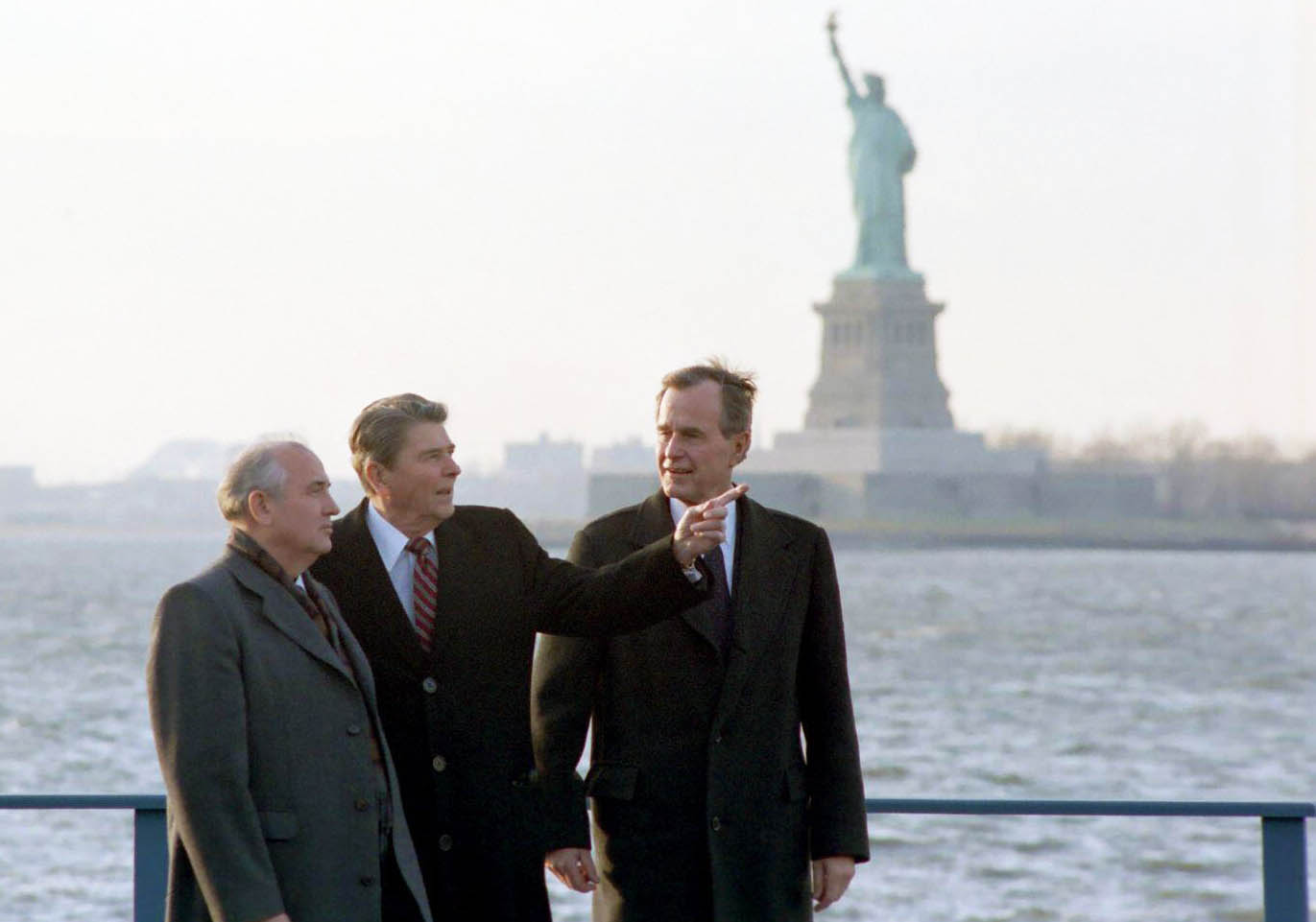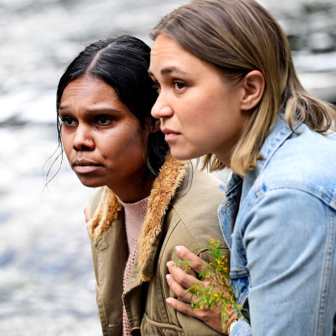“History has a way of roaring back into our lives,” warns Brian Knappenberger, whose latest documentary, Turning Point: the Bomb and the Cold War, is screening on Netflix. Tracking through ninety years of geopolitical upheaval from the rise of Stalin and Hitler to Putin’s invasion of Ukraine, the nine episodes give us history as a swirl rather than an arc. We are turning back into another phase of the cold war, it shows us, with equally massive and urgent risks.
An opening montage blends images of an atomic fireball, tanks in the streets, burning villages, crowds tearing down statues and leaders being saluted by military parades. Historian Timothy Naftali speaks through it all: at its peak, he says, the cold war touched every continent, shaping the decolonisation of empires and transforming domestic politics in the great cities of Europe, North America and Asia.
As Knappenberger acknowledges, the series is “insanely audacious.” It features original footage of critical moments, interviews with people who lived through worst of them, and commentary from around a hundred historians and political insiders, many of whom were directly involved in the crises. Lessons have been learned from documentary-maker Ken Burns, with talking heads presented as dramatis personae. It’s all about managing tone and pacing so that reflections from the present create depths of field for visually evoked scenes from the past.
Knappenberger achieves something of the Burns effect in bringing out an at-times unbearable sense of how these events were experienced by those caught up in them. Rapid montages conveying the scale and density of the upheavals are counterposed with sustained evocations of the experiences of those caught up in them.
Hiroshima, considered a purely military target by the US government, had a civilian population of 350,000. Prewar photographs show carts and bicycles in narrow streets spanned by arching lamps, a place of small traders and modest resources. People who were living in the city as small children deliver their testimonies steadily, quietly — though, as one of them says, visibly working to sustain his composure, “I hate to remember those days.”
Howard Kakita, aged seven, was on his way to school with his five-year-old brother when the warnings started. The explosion came as they returned to their grandparents’ house, which was obliterated. They dug themselves out of the rubble and fled the city through the ruins and carnage. Keiko Ogura’s brother told her he had seen something drop from one of the planes flying over, a tiny thing, which did not fall directly, but was caught for a while in the slipstream of the aircraft before arching down. Then came the flash, the loss of consciousness and the awakening to a world in which “everything was broken.”
The effect of the blast on human bodies creates scars in the memory. Corpses turned to ash on contact. The river was full of them. It’s hard to watch, and to listen to these accounts, as it should be. They are a necessary corrective to Christopher Nolan’s Oppenheimer, with its brief, stylised evocation of the horrors, firmly subordinated to the main story of an American hero and his tribulations.
Is it even possible to see such a disastrous train of events from “both sides?” That, surely, is the question we were left with by the cold war that followed. For the first time in history, two global superpowers were frozen in a deadlock of mutually assured destruction. The rush to catastrophe was paralysed by symmetry.
That, at least, was one version of the narrative. But mutually assured paranoia, the more complex and confusing side of things, was anything but paralysing. The belief in an enemy working in secret on unimaginably evil weaponry provokes an overriding conviction that your own side must secretly work on something equivalent or preferably more lethal. This is the “hot” equation behind the cold war.
With technological escalation seemingly taking on a life of its own, no one could comprehend the scale of what was being created. The American government’s messaging was all about survivability — backyard fallout shelters, “duck and dive” drill for schoolchildren — as if a small wooden desk might be an effective shield.
The language used at the time betrays a pitiful divorce from reality. A military officer flippantly describes a planned thermonuclear test as something that will make Hiroshima and Nagasaki look like firecrackers. The monstrous Bikini Atoll explosion, with 7,000 times the power of the Hiroshima blast, give its name to a new provocative style of swimwear.
“Institutional Insanity” is the title of the episode that deals with all this. It is as if the human brain simply isn’t coping with the consequences of its own activities. No one really knew what they were doing, comments nuclear historian Alex Wellerstein, and testing became a kind of game for hyperactive experimentalists.
In interviews recorded before his death last year, Daniel Ellsberg recalls joining “the smartest group of people I ever did associate with” at Rand Corporation, men seen in contemporary photographs relaxing with their feet up on their desks, sleeves rolled up, smoking. But it is Stanley Kubrick’s Dr Strangelove, grimacing in close-up as he advises on enemy psychology, who gets the last word in this particular sequence. “That was a documentary,” says Ellsberg.
Following Stalin’s death in 1953, his successor Nikita Khrushchev took a leaf out of the Strangelove manual. With an arsenal that couldn’t catch up with massive overreach of his opponents, he sought to weaponise American fears by making exaggerated claims, mounting the covert Active Measures program, which spread misinformation through news media and other forms of public communication.
Against this backdrop, the achievement of Khrushchev’s ultimate successor, Mikhail Gorbachev, in defusing the collective psychosis was extraordinary, whatever his political failings from the Russian perspective. Polarised views of Gorbachev’s legacy remain one of the deepest challenges to the West’s comprehension of post-Soviet Russia. Putin’s pronouncement that the break-up of the Soviet Union was the greatest geopolitical disaster of the modern era has driven the new wave of military aggression that now confronts us.
One of Turning Point’s great strengths is its engagement with the complexities of moral arbitration, which are explored in the extensive commentary offered those in a position to offer genuine insights. Khrushchev’s great-granddaughter, Nina Khrushcheva, now a professor of international affairs in New York, gives an account of the secret speech of 1956, in which Khrushchev made public the scale of the purges of the Stalin era and condemned the cult of personality that had poisoned Soviet politics.
Stephen Kinzer, author of Overthrow: America’s Century of Regime Change from Hawaii to Iraq and other books on American cold war policy, delivers an excoriating analysis of the thinking behind interventions in Guatemala, Chile and Iran. Covert operations like these were one of the defining elements of the cold war; we get insider views of the activities of the CIA and its Soviet counterpart from dissidents now free to tell the tale and bring into focus some of the minor players who shaped events.
The cult of personality accounts for much of the evil in the modern political world, but an excessive focus on these figures is a problem in itself, as we are learning with the media response to Trump in America now. A personality-driven view of history glosses over the influence of those in the supporting cast — the secret service directors, spies, foreign policy advisers, diplomats, propagandists, journalists — and, it must be stressed, the voting public, who allow themselves to be swayed by flagrant manipulation.
Are we returning to the cold war? That question runs through Turning Point, culminating in the final episode on Ukraine. “History is not history,” says journalist Lesley Blume, “but we are in an ongoing tide.” •




